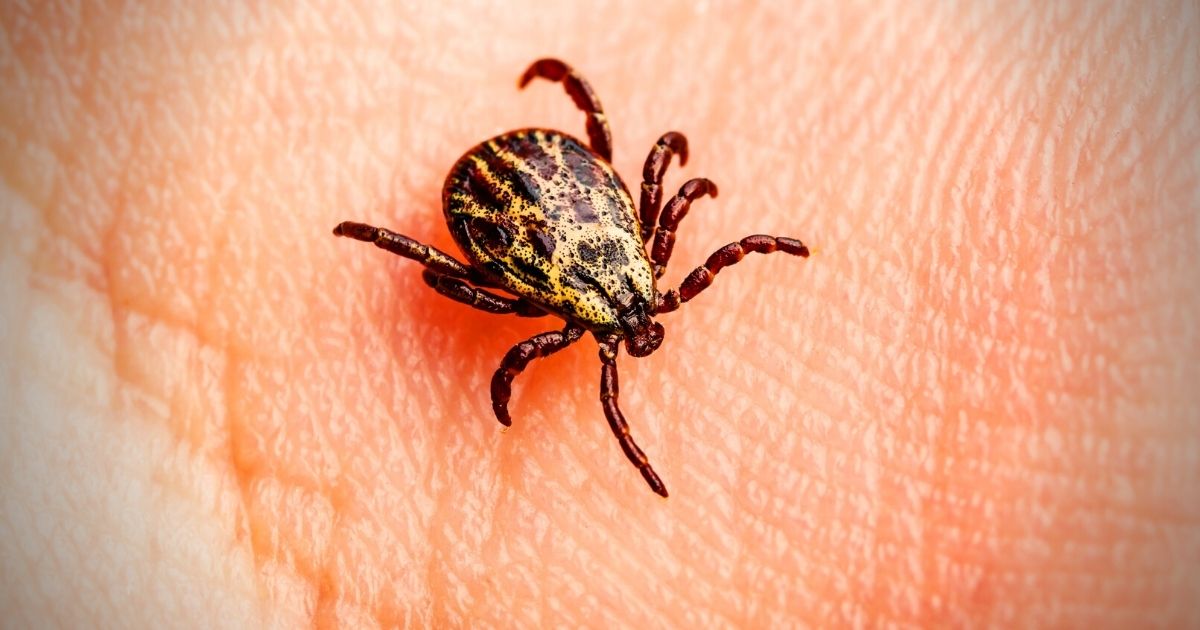May is Lyme Disease Awareness Month. As we head into summer, the next three months or more will be spent pursuing the splendors of the great outdoors.
We all know to wear sunscreen and hats to protect our skin. Some of us know to wear long sleeves and pants to ward off diseases from insect bites. A few know to follow medication regimens and sleep under netting in some parts of the world for the same reasons.
Hardly anyone thinks of doing any of the above as a means of protecting ears and our hearing. Today’s post raises that thought.
Borrelia burgdorferi
Borrelia burgdorferi is a bacteria found in North America. Similar Borrelia genospecies occur in Europe. Borrelia are long, skinny, corkscrew organisms (Fig. 1) that propel themselves by shimmying along.
They’re too thin to be viewed with conventional microscopy, with widths of 1/5 to 1/3 of a micron (that’s a millionth of a meter!). They’re about 10 times longer than they are wide.
Imagine having those snaky things in your bloodstream, which is what happens if you get bitten by ticks carrying Borrelia, like the fossilized one in the title picture. It’s full of ancient, Borrelia-type bacteria.
Borrelia burgdorferi and Lyme’s Disease
The bacteria causes Lyme disease which is transmitted by black-legged ticks to humans, especially in the northeastern, midwestern, and western portions of the US. Lyme disease is manifest by a bull’s eye rash (Fig 2), which goes on to provoke a variety of bodily harms.
B. burgdorferi and Lyme disease are newcomers — the disease wasn’t named and identified until the mid 70s, the bacteria wasn’t isolated until the early 1980s. But both been around for much longer than that. B. burgdorferi-like bacteria (Palaeoborrelia dominicana) have been found trapped in New World amber dating back 15,000 million years.
The multi-stage disease cycle starts when the bacteria infect mammals and birds that have been bitten by ticks carrying the bacteria, who feed on the blood of the mammals. The cycle comes full circle when bacteria-carrying ticks drop eggs to the ground.
Once a warm-blooded animal is bitten, the bacteria invades its blood and tissue. Borrelia burgdorferi is especially partial to the white-footed mouse. Ticks in different stages of their life-cycles bite and feed up the mammalian food chain, going from mice to larger mammals like humans and deer. At each stage, they can transfer the bacteria and infect their present host. When they do so in humans, the Lyme disease encompasses a constellation of pathologies, including myocarditis, cardiomyopathy, arrythmia, arthritis, arthralgia,meningitis, neuropathies and facial nerve palsy.
Borrelia burgdorferi and Sudden Sensorineural Hearing Loss (SSNHL)
The final symptom listed above, facial nerve palsy, may trigger a thought in the minds of Audiologists and those who have encountered shingles affecting the auditory system (we will have future posts on this). Facial nerve palsy can occur when the herpes virus (varicella zoster) spreads into the geniculate body of the facial nerve near the inner ear, causing nerve damage that affects your hearing, in a condition called Ramsay-Hunt.
Viruses are not bacteria, so why did we bring this up? Because a survey study published several years ago draws a link between Lyme disease and sudden sensorineural hearing loss (SSNHL):
“4 relevant and valid articles … confirm positive serology for Borrelia burgdorferi … suggesting active Lyme disease as a cause in patients with sudden sensorineural hearing loss.”
The same study also provides a case report of a female with confirmed Lyme disease who presented with SSNHL followed by facial paralysis. The latter resolved with antibiotic therapy, the hearing loss did not show recovery. The timing of symptoms and blood work suggested the Lyme disease-hearing loss link.
If Lyme disease does cause hearing loss, it may well do so by attacking the vestibulocochlear nerve or facial nerve, perhaps at the geniculate body as happens with Ramsay Hunt. Nobody knows but the first step has been taken — a link has been established between disease and hearing loss.
The take home for those who wander out into the great outdoors in summer is to know where you are, know whether there are ticks where you are, and wear clothing that covers appropriately if you’re in tick country. If you develop a rash like that shown in Fig 2, see your doctor. If you experience hearing loss, see an Audiologist.
What Should Audiologists Know?
Audiologists can’t know what causes SSNHL most of the time, but they can and should be familiar with the usual and the unusual suspects. Sudden sensensorineural hearing loss (SSNHL) is a topic of its own that we’ve written about at HHTM before. SSNHL associated with Lyme disease is not reported or connected very often by physician or audiologist.
It’s easy to miss the connection. Lyme disease, known as the “great imitator,” can be misdiagnosed (e.g., as multiple sclerosis). It can take weeks to manifest after the tick bite, with symptoms rolling out insidiously. In contrast, SSNHL is, by definition, sudden, dramatic, and impossible to miss.
Who would think to link sudden devastation of a single sensory channel with slow debilitation of a variety of body systems?
What Should Audiologists Do?
Audiologists should include Lyme disease as a consideration when taking the history of anyone who presents with SSNHL. Even if the disease is not reported, the history should query outdoor activities by region; also it should document physical complaints (e.g., headache, joint pain, etc) that fall within the constellation of Lyme disease pathologies.
As always, close professional working relationships with physicians are a must for Audiologists who see patients with SSNHL.








